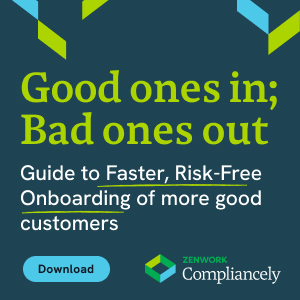The Importance of Form W-9 To Get Vendor Taxpayer Identification Number (TIN)

Businesses work with vendors and freelancers to distribute additional work and deliver more. Sometimes, businesses work with independent contractors because employed workers could become expensive as months roll.
While employed workers are issued W-2 forms to classify the workers and their pay as employee compensations, independent contractors come with very little paperwork.
Today, emerging industries like the gig economy, cryptocurrency, e-commerce, and more are relying on remote talent, freelancers, and independent contractors to get things done.
All the compensations that businesses pay to independent contractors must be reported and filed with the IRS on Form 1099-NEC.
Due to the inherent non-transparent nature of the gig economy, many vendors do not disclose their identities or TINs to hide their incomes from the IRS, and businesses that hire these independent resources are bearing the burn.
In order to regulate the gig economy and incorporate standardized information reporting, the IRS requires independent contractors to disclose their TIN/name information. This practice allows the hiring business to validate the identities of the vendor, verify the details, and decide if the vendor is worth the risk of onboarding.
Today, we will discuss how Form W-9 fits into this scenario and how it is playing an important role in enabling tax compliance within the gig economy.
What is Form W-9?
The IRS requires businesses to issue a Form W-9 to obtain the taxpayer identification number from the vendor for information reporting purposes. A W-9 form is specifically used for obtaining the TIN/SSN/EIN of the vendor. Form W-9 is just for documentation and information purposes and doesn’t need to be submitted to the IRS.
Download Form W-9 here
Why Do Businesses Use Form W-9?
You might think “what is the point of sending a Form W-9 to vendors?” And this is where we come across another, newly introduced IRS form called Form 1099-NEC.
Form 1099-NEC specifically deals with non-employee compensations. This means all the payments made to vendors during a tax year in the course of business are to be reported on Form 1099-NEC along with the vendor TIN.
The vendor TIN must be reported in Form 1099-NEC, and without this, the IRS will reject the returns. In order for the IRS to cross-verify the payments reported by your business and the income reported by your vendor, TIN is the only common denominator – making it very crucial for information reporting.
Without the vendor TIN, your 1099-NEC forms will be rejected by the IRS for information omission. This is why solutions like IRS TIN Matching are creating buzz across a variety of industries.
So, businesses need Form W-9 to obtain the real-time vendor TIN and to report the same on IRS Form 1099-NEC.
How Form W-9 Helps With Vendor TIN Solicitation?
Form W-9 is a formal instrument used to obtain tax information from your vendor. A W-9 form can be mailed by USPS or sent electronically to the vendor or the freelancer. The vendor is required by law to furnish the taxpayer identification information in the form and send the completed form back to you.
How To Verify The Obtained Vendor TIN?
The solicited TIN is then validated against the authorized data lists of the IRS to check if the details match the official records. This is called TIN Matching and this widespread practice is leveraged to ensure that the vendor is providing accurate TIN information.
Compliancely’s Real-Time TIN Matching API
Compliancely is a real-time identity verification powerhouse, which helps you validate and verify your vendor TINs in real-time. You can check as many as 100,000+ TINs in less than one minute and get accurate and verified results.
